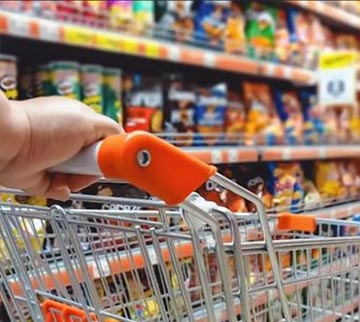India’s recently released Consumption Expenditure Survey has led to a series of discussions regarding the comparability of the latest survey with previous rounds. Many have incorrectly interpreted the brief one-page note on changes in the current round to pose challenges for comparability. However, nowhere does the fact sheet mention that the present round is incomparable with previous such estimates.
The issue of comparability stems from two separate changes—the first is the addition of newer consumption items in the present survey; and the second from the change in field visits from a single visit to three visits. For the former, it is not a surprising issue given that the present survey comes after more than a decade. During this decade, consumption baskets have changed significantly with more new items added to the universe of goods and services that could be consumed. OTT platforms are a good example of such services.
Consumption baskets have changed significantly with more new items added to the universe of goods and services that could be consumed.
This issue is neither new to the present round of the survey nor is it a unique issue relevant to just India. Those using this as the basis to argue incomparability would find it useful to visit the Bureau of Labor Statistics (BLS) website which contains relevant information regarding consumption expenditure surveys conducted in the United States (US). Incidentally, after much extensive research, BLS even makes adjustments for quality while using consumption expenditures and price data to update their inflation figures.
Indians once had transistors and gramophones as a part of their consumption basket, however, is it still a valid question to ask while trying to estimate a relevant consumption basket for 2022? Perhaps not. It is important to refresh what is it that constitutes as the purpose of the consumption expenditure survey. To arrive at consumption shares that provide a deeper understanding of the consumption basket and to use this consumption basket for calculating poverty, inflation, deflators, etc. Therefore, if the consumption basket shifts, it by definition has no implications for any of these objectives.
The second issue is about the field visits which have been increased in the present round of the survey. The 2011 survey had a single visit to households, with the visit taking longer than four hours. Naturally, respondents were tired from four-hour-long lengthy questionnaires and therefore, respondent fatigue would set in. NSS’s own focused surveys on consumption expenditures on consumer durables, social services such as health and education, amongst others, found a greater consumption expenditure on these items from focused surveys relative to the comprehensive four-hour-long consumption expenditure survey. In other words, a lengthy questionnaire led to substantial measurement errors when it came to the set of goods whose consumption share was expected to go up. Naturally, NSS recognised this as a problem and subsequently decided to split the questionnaire into three separate visits. This was expected to reduce respondent fatigue and subsequently, measurement errors.
A lengthy questionnaire led to substantial measurement errors when it came to the set of goods whose consumption share was expected to go up.
Some conclude that the increased visits render the two surveys incomparable. The problem with this assertion is that it ignores the nature of measurement error which is unobserved. Moreover, increased visits reduce errors in estimation and allow us to get closer to the population consumption expenditures. This is a desired objective in statistics; and while we cannot go back in time to undertake three visits in 2011, we certainly can become more precise in our estimation going forward.
Another recent argument that has been puzzling is the conversation about increasing the Tendulkar poverty line by 10 percent since we now undertake three separate visits instead of one. The argument is that since we capture consumption expenditures better, we need to increase the real poverty line (inflation adjusted) by 10 percent to get comparable poverty estimates. The fallacy in this argument is that it makes the poverty line a function of the recall periods used for capturing consumption expenditures. This is tautological and extremely inconsistent with how such exercises are undertaken in other parts of the world. The objective of a consumption expenditure survey is to get a distribution of consumption expenditures. The objective of a poverty line is to estimate a threshold below which households are considered to be deprived. Therefore, there is no rationale for why a poverty line should change if we change survey recall periods. The poverty line defines the poor—and is applied to a survey consumption distribution—irrespective of the choice of recall period of the distribution.
Take the World Bank as an example which has two poverty lines—PPP $1.9 and PPP $ 3.2 which are applied across the world. This poverty line is independent of how a country conducts its survey. That is, it is the same for India which until recently did a single visit, and for the US which generally gives a diary to households who then note their weekly expenditures in the diary. In other words, the poverty line is not a function of how countries measure consumption expenditure.
The fallacy in this argument is that it makes the poverty line a function of the recall periods used for capturing consumption expenditures.
In the context of India, and how Bhalla & Bhasin (2024) arrived at their poverty estimates. We take the 2011-12PPP $1.9 poverty line for the year 2011. This translates to INR 790 per person per month in rural areas and INR 967 in urban India. This is about 3 percent lower than the official Tendulkar Poverty line for the year 2011-12 and therefore, the PPP $1.9 poverty line is equivalent to India’s own Tendulkar poverty line. The next step is to adjust these poverty lines for inflation to get a comparable poverty line for 2022-23. These turn out to be INR 1,452 in rural areas and INR1,752 in urban areas. Based on this, India’s poverty as per the official poverty line translates to less than 2 percent.
The Indian economy has done exceedingly well in recent years, and as highlighted in a recent article, India has managed to eliminate extreme poverty while simultaneously reducing inequality. However, expert commentary has left much more to be desired from an economy soon set to be the third largest in the world. We need to get past the irrelevant debate on the comparability of the survey and focus more on how to redesign India’s social safety net for the next decade.
Karan Bhasin is a New York-based economist.
The views expressed above belong to the author’s. ORF research and analyses now available on Telegram! Click here to access our curated content — blogs, longforms and interviews.

